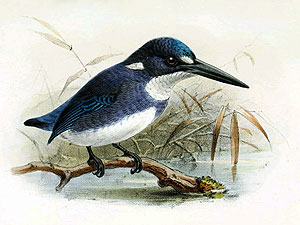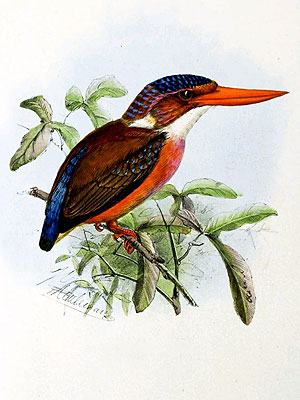Rapa Kingfisher (Todiramphus sp.)
The Rapa Kingfisher is yet a hypothetical species that I like to erect based on an account from the 1920s. [1]
This account speaks about the color symbolism of Rapan feather cloaks and says that royal cloaks incorporated dark blue feathers from a bird named “kotokoto”, which was supposed to have been a kingfisher, apparently most likely the Tuamotu Kingfisher (Todiramphus gertrudae Murphy) [but named Halcyon gambieri in the paper [1]].
I personally think that this is rather unlikely, if the feathers came from any kind of imported kingfisher species, as the paper [1] suggests, then probably not from birds from Mangareva (which were already almost extinct at that time) but even more unlikely from birds from the Niau atoll, which is located far, far away from the island of Rapa. They may, however, have come from the far more closely situated Cook Islands, which harbors more than one endemic kingfisher forms. But there may very well once have been an endemic kingfisher species on the island of Rapa as well, because why not?!
*********************
References:
[1] J. D. Tennyson; Atholl Anderson: Bird, reptile and mammal remains from archaeological sites on Rapa Island. In: Atholl Anderson; Douglas J. Kennett: Taking the High Ground; The archaeology of Rapa, a fortified island in remote East Polynesia. In: Terra Australis 37. 105-114. Canberra, ANU E Press 2012
*********************
edited: 08.02.2020




